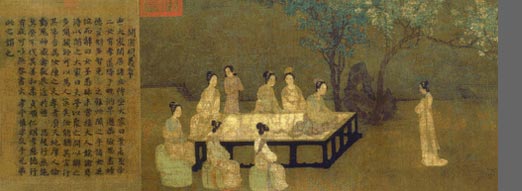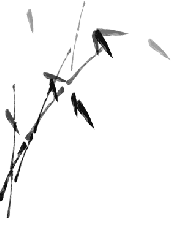| | |
The lacquer ware is one of exquisite Chinese crafts. Chinese lacquer ware has a long history dating back as early as the New Stone Age. The original wares in China were those coated with black and red lacquers. From the Shang Dynasty to the Han, colorful painting, gold inlaying and other techniques were introduced into the making of lacquer ware. The oldest lacquer ware discovered dates back to the Warring State Period (403--221 BC) when lacquer ware was popular.
Chinese lacquer is a natural varnish made from the sap of the lacquer tree. China is abundant in lacquer resources. Lacquer trees in Mainland China are distributed in some 550 counties in 23 provinces. Exposed to air, it forms a plastic coat, resistant to water, acid or alkaline corrosion. To make lacquer ware, a base coat is applied to a core material, followed by extremely thin layers of the finest lacquer. Once these have dried, a final layer is added to make the lacquer strong and light, whilst maintaining the elegant appearance and harmonious color. It was in the Tang, Song and Yuan dynasties, when the lacquer ware production started to flourish.
Fuzhou is well-known for the "bodiless lacquerware", one of the "Three Treasures" of Chinese arts and crafts (the other two being Beijing cloisonne and Jingdezhen porcelain). Fuzhou lacquer wares are resistant to heat, acid, alkali and electricity.
The lacquer wares made in Yangzhou are famous for their elegance and delicacy and the unique creative technique. Yangzhou lacquer articles are distinguished not only by carvings in relief but by exquisite patterns inlaid with gems, gold, ivory and mother of pearl. The products are normally screens, cabinets, tables, chairs, vases, trays, cups, boxes and ashtrays.
Pingyao, an ancient town in Shanxi Province, produces lacquer ware which features the luster polished by craftsmen's palms.
The making of Beijing lacquerware starts with a brass or wooden body. After preparation and polishing, it is coated with several dozen up to hundreds of layers of lacquer, reaching a total thickness of 5 to 18 millimetres. Then, gravers will cut into the hardened lacquer, creating "carved paintings" of landscapes, human figures, flowers and birds. It is then finished by drying and polishing. Traditional Beijing lacquer objects are in the forms of chairs, screens, tea tables, vases, etc. Emperor Qianlong of the Qing Dynasty, an enthusiast for lacquerware, had his coffin decorated with carved lacquer. Before the invention of the Chinese ink, lacquer had been used for writing. Twenty-eight bamboo clips found in a Warring States (475-221 B. C. ) tomb at Changtaiguan, Xinyang, Henan Province, bear a list of the burial objects with the characters written in lacquer.
>> View More of Chinese Lacquer
|

